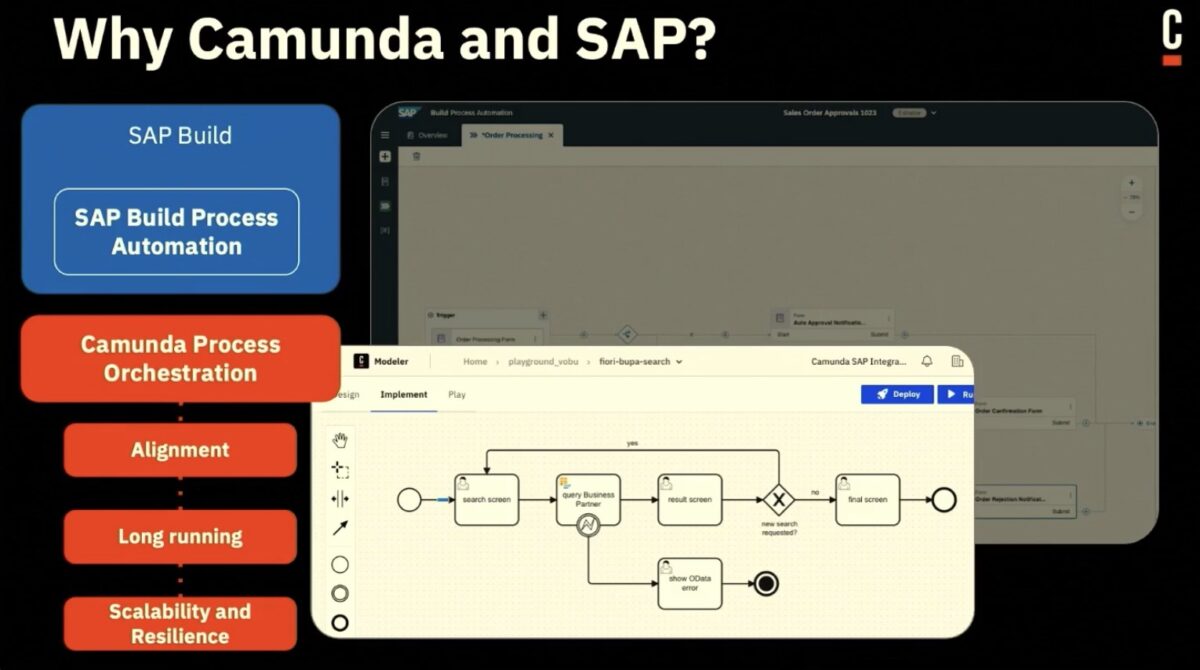I’ve been following Camunda a long time, and I’m pleased to see that they’ve “grown up” enough to have a separate analyst session at the conference, which I attended this afternoon. Because it was an open discussion of the roadmap and other topics, it was all under NDA. Sorry!
However, after we finished the analyst session, I ended the day listening to Camundi (Camundis?) Tobias Conx and Volker Burke talk about their upcoming SAP integration. This was only publicly announced a few weeks ago, but they seem to have hit the ground running and have quite a bit done already. Volker is a recent hire and is an SAP mentor, which means that he’s well-respected in the industry in addition to having a certain level of proficiency. He previously worked at a company that did quite a bit of Camunda-SAP integration, and showed some of the benefits of adding Camunda as a process orchestrator to SAP.
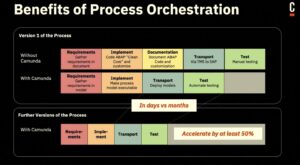
In this type of integration, Camunda orchestrates SAP automations in a similar ways as if the SAP modules and functions are any type of services. However, the connectors have been more tightly coupled so that they run in the SAP infrastructure. These connectors are set up as applications within the SAP BTP (Business Technology Platform), then the Camunda view of the connector is a technical OData connector allowing for those applications to be executed to read/write data between Camunda and SAP. Camunda forms can even be rendered within SAP Fiori.
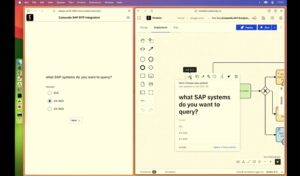
There are some important use cases for this, including transforming and migrating from SAP ECC to S/4HANA, which allows multiple ECC systems to be migrated to S/4HANA over a period of time — something that many SAP customers are still struggling with. There’s also a number of different industry solutions that use the OData interface to SAP together with Camunda and other components, such as Cognizant’s Accounts Payable solution. SAP customers can also use this for their own internally-created process orchestrations that tie SAP together with Salesforce and other platforms in use.
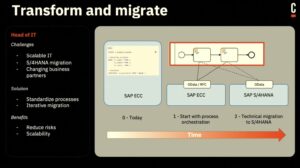
In many of the use cases, SAP Fiori or BTP provides the user interface which connects to a Camunda process task, then other OData tasks within the process execute SAP functions to read/write data.
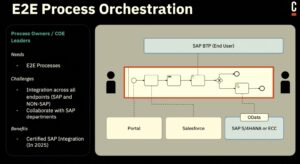
This will be released by Camunda in January 2025, and will be part of the 8.7 release without any extra licensing fee. Assuming you’re already using SAP BTP, it will not impact SAP licensing either.
That’s it for day 1 of CamundaCon 2024 here in New York. I’m off to the evening reception — where everything is off the record once the bar opens — and I’ll be back here blogging about day 2 in the morning.

